You will find few places like this in the world, because the land of the Garrotxa is a magical place full of enchantment. It is a land of volcanoes.
How many places in the world do you know of that have up to forty-five volcanic cones? And if this is not enough, La Garrotxa and the Garrotxa Volcanic Area Natural Park is a land full of traditions, culture, history and gastronomy, in short, a treasure in all its facets.
More than 11,500 years ago, these majestic figures of nature were in full eruption, but there is no need to worry because they are currently inactive and have become one of the main tourist attractions in the area. For this reason, it is not surprising that the locals boast about their region, and being able to enjoy a place like this close to home is undoubtedly a privilege.
The Garrotxa Volcanic Area Natural Park is located in the county of the same name, La Garrotxa, in the foothills of the Pyrenees of Girona. This beautiful park covers an area of 15,000 hectares and is shared between eleven municipalities, some of which are the most beautiful villages of La Garrotxa: Castellfollit de la Roca, Les Planes d’Hostoles, Les Preses, Sant Aniol de Ventanes, Sant Feliu de Pallerols, Sant Joan les Fonts and Santa Pau, the Bianya Valley, among many others.
We encourage you to read on to discover everything you need to know about the Garrotxa Volcanic Area Natural Park and its volcanoes. Undoubtedly, this is a space to enjoy nature with the family. Don’t miss out!
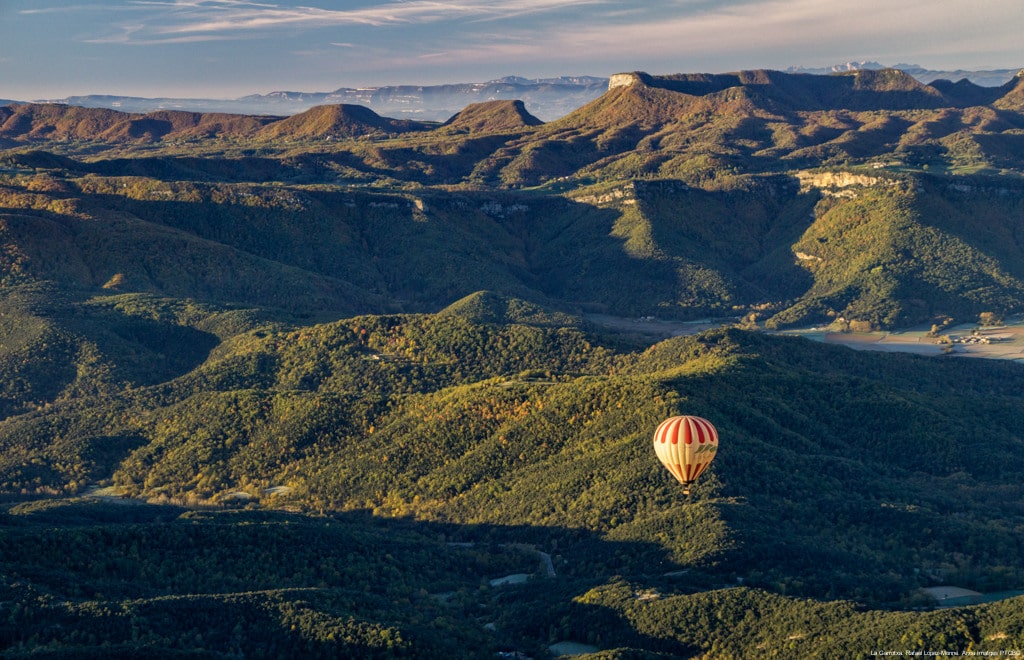
Whether you’ve been to La Garrotxa or not, here are our suggestions for the 5 essentials that you cannot miss if you visit the Garrotxa Volcanic Area Natural Park.
Whether on foot or by bicycle these are two of the best ways to enjoy the Garrotxa volcanoes route. Here you will be surrounded by a beautiful natural environment and be able to calmly observe the majesty of the volcanoes and a landscape with the most unique vegetation and fauna.
So, if you look for information in the same network of the Garrotxa Volcanic Park, you will find a network of signposted footpaths and routes of different distances and levels.
Below, we suggest three routes that pass through some of the essential highlights of the park. If you want to discover more trails along the Route of the Volcanoes, you can find them all on the website.
This is probably one of the most complete routes to get to know the must-see places in the area. Designed to be done as a loop, it covers a total distance of 12 kilometres and a time of between 4.5 to 5 hours.
This is an ideal route to do with children, because it is technically simple and very well signposted. It can be done either on foot or by bicycle and along the way you will find different facilities and services, such as restaurants, bars and water springs will make the route easier for you.
Along the way, you can stop at the main icons of the park, the Fageda d’en Jordà from where you will depart to the volcano of Santa Margarida where you can descend into the crater and visit the hermitage in the middle of it, and finally the Croscat from where you will head back to the route’s starting point.
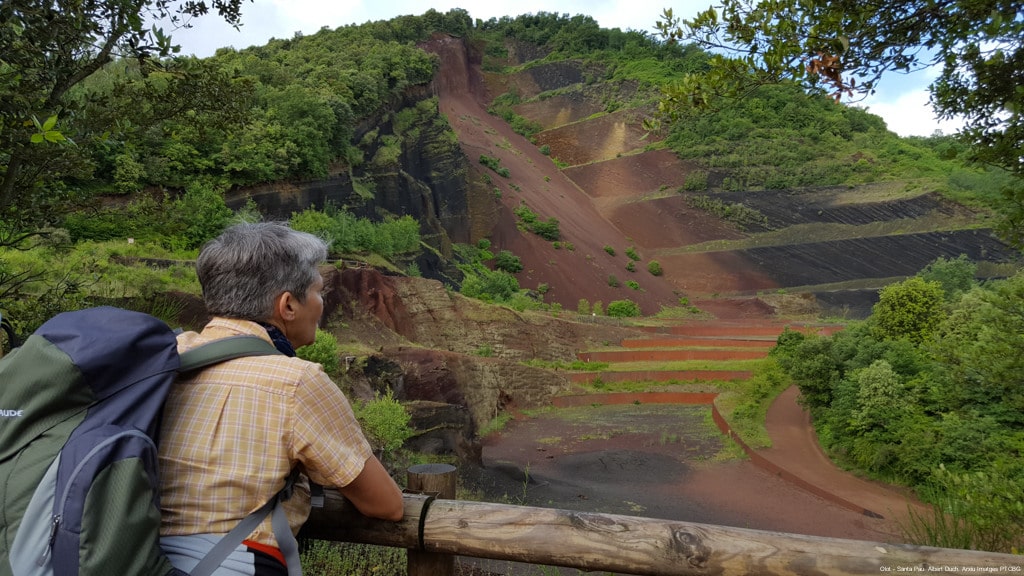
We continue with another ideal route to do with the family, about 5 kilometres long and not much longer than an hour and a half.
On this route you will discover an interesting, rather strange area, the basaltic cliffs, resulting from the cooling of the lava flows from past eruptions of the volcanoes, with some examples of riverside woodland with species of great botanical value.
For the most curious, you will pass through the three lava flows from different volcanoes which descended successively through this point of the Fluvià valley. The lava flows followed the river courses and solidified. Subsequently, the river deposited boulders, sand and silt that were trapped under the next lava flow.
We finish our selection of itineraries of the Route of the Volcanoes, with a fantastic excursion that brings nature and heritage together. This is a more difficult route than the previous ones, especially because of its 17 kilometres of trails, starting from Sant Feliu de Pallerols, to discover a surprising Romanesque heritage.
Some of the heritage site you can find are: the Hostoles Castle and the Colltort, the Sanctuary of La Salut and the medieval bridge of Sant Sebastià, among others. You can also discover other volcanoes in the area: Sant Marc, Puig Roig, Can Tià volcano and Traiter.
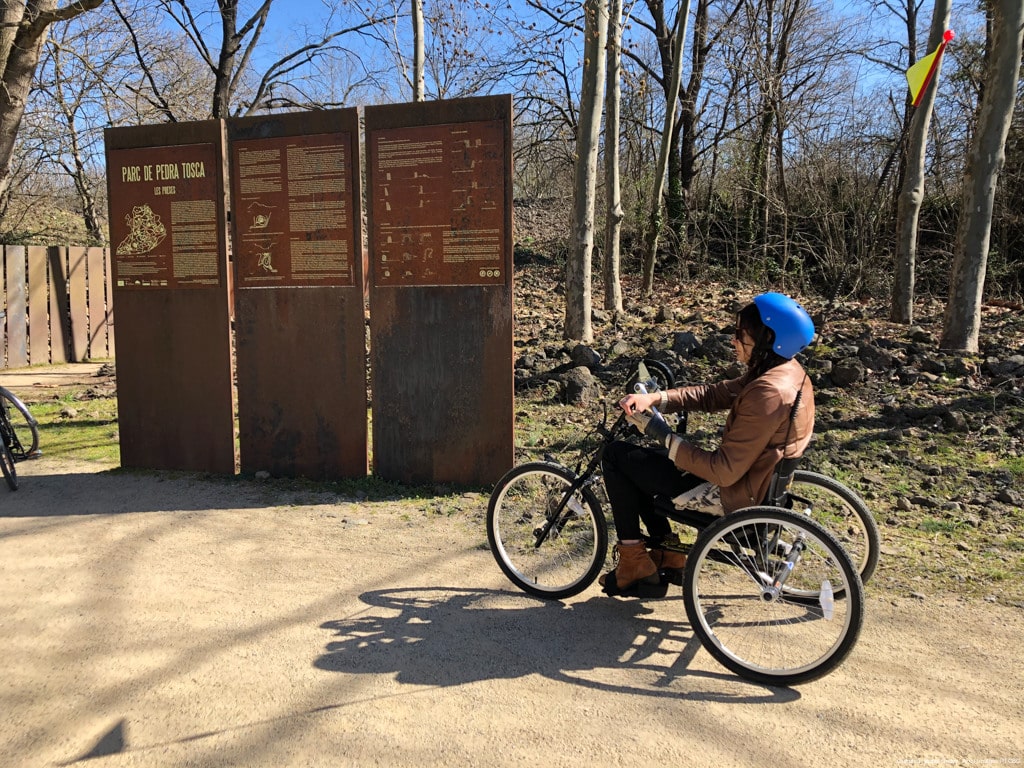
Another must-see in the Garrotxa Volcanic Area Natural Park is the Volcano Museum, which shows visitors the area’s main volcanological phenomena and plant and animal ecosystems.
Thanks to models, touch-screen computers, interactive modules and even an earthquake simulator – unique in Catalonia – both children and adults will be able to discover this curious and extraordinary natural phenomenon.
In addition, the museum grounds also provides visitors with a botanical garden which contains samples of the natural vegetation of La Garrotxa, and a garden of medicinal plants.
Visiting the Museum of Volcanoes is both educational and a whole lot of fun!
The Beech Forest of Jordà is one of those magical forests, both enchanting and with a captivating aura of fantasy. So much so that even Joan Maragall dedicated a poem to its beauty.
Located on the ancient lava flows of the Croscat, the Fageda d’en Jordà, a forest of imposing beech trees, offers one of nature’s most beautiful spectacles, especially in the autumn months when the trees shed their leaves.
So, we recommend that you let yourself get lost along the area’s paths and observe the beautiful colours that this forest offers at any time of the year.
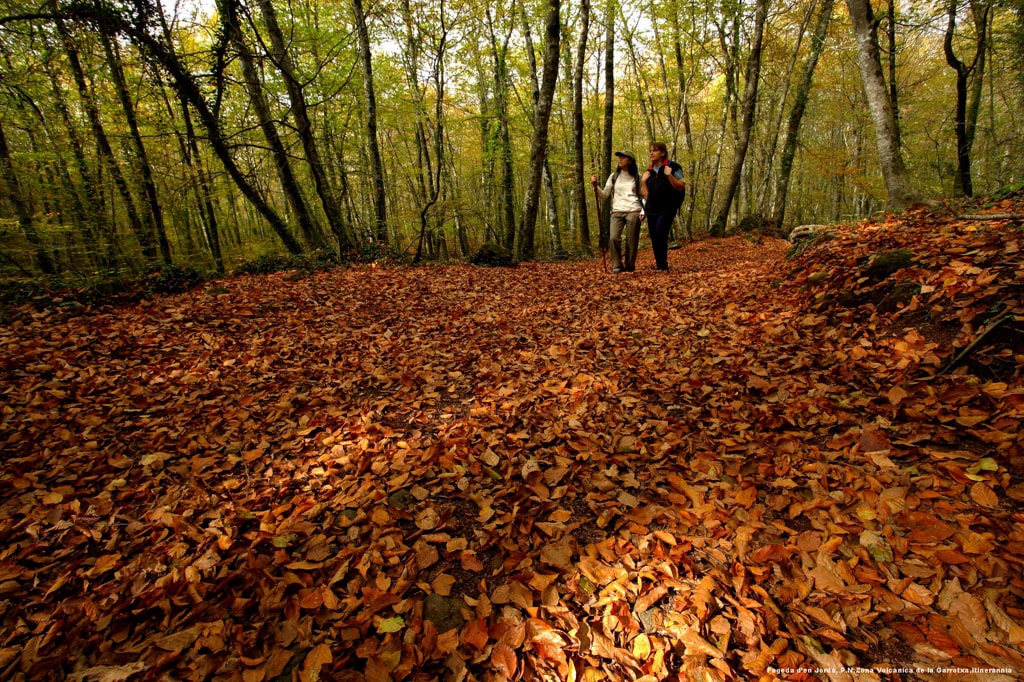
In addition to its extraordinary nature, the Garrotxa Volcanic Park is a testament to the passage of time and is home to a wealth of heritage and captivating sites.
Among all the municipalities that make up the park you will find charming medieval villages where time seems to have stood still, such as Santa Pau, Castellfollit de la Roca or Mieres; where you will find castles and churches, age-old walls and Roman roads that link the by-ways and villas that have survived for more than two thousand years.
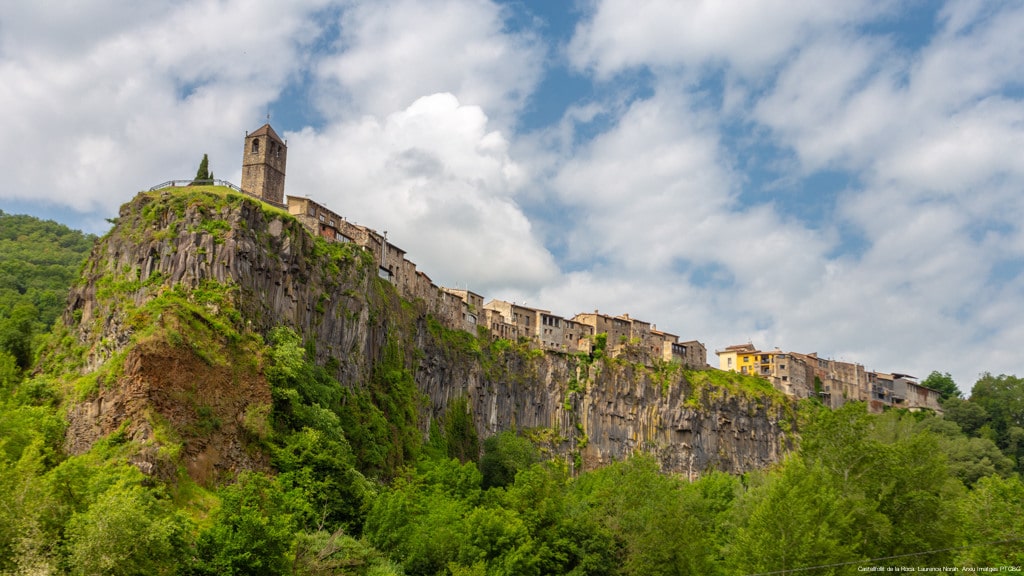
Now that you know some of the must-sees in the Garrotxa Volcanic Park, we will now tell you about the area’s best-known volcanoes . Stay alert!
This is the most famous of the whole volcanic park and according to experts, it is a mixed type volcano that went through several explosive eruptive phases, resulting in a large and very unique circular crater of 330 metres in diameter.
Today, this crater is the most photographed postcard image of the park and is easily accessible, as there is a car park nearby. One of the most notable peculiarities of this interesting volcano is that in the middle of the crater stands a small Romanesque hermitage surrounded by green meadows, where the slopes are a tapestry of holm oaks.
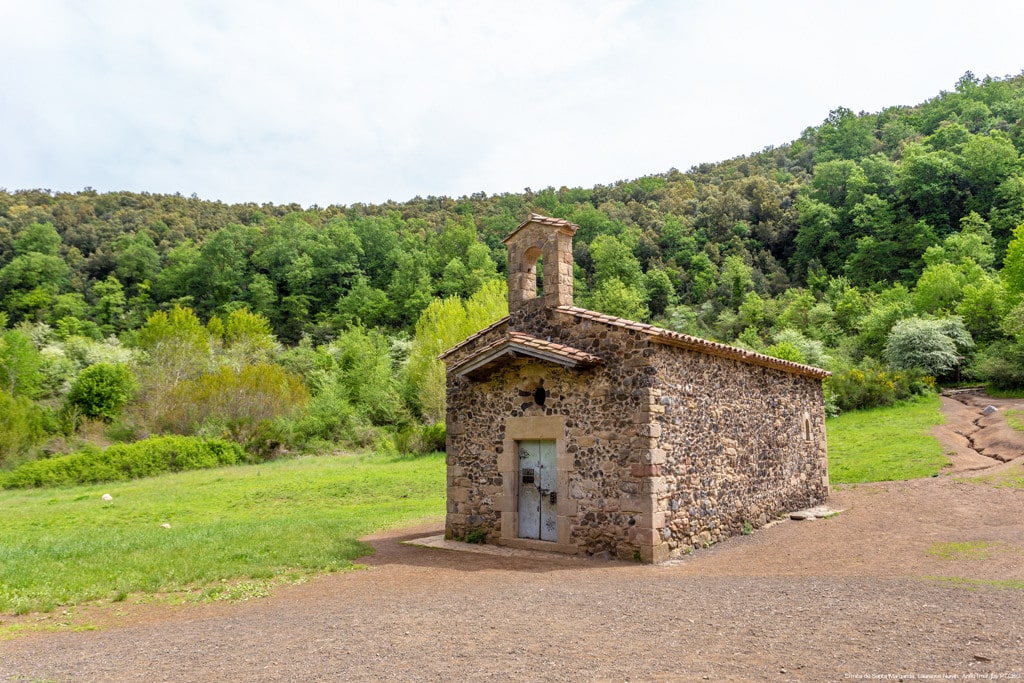
We continue with another volcano that is a symbol of the park’s identity. It is the youngest volcano, but at the same time, the largest in the Iberian Peninsula. You will easily recognise it by its 100-metre-high open cut, which allows you to see the minerals and remains of magma in its interior, emitted during ancient eruptions.
If you are wondering why it is open, this is due to the period of clay quarrying it was subjected to until 1991, which left it in its current state.
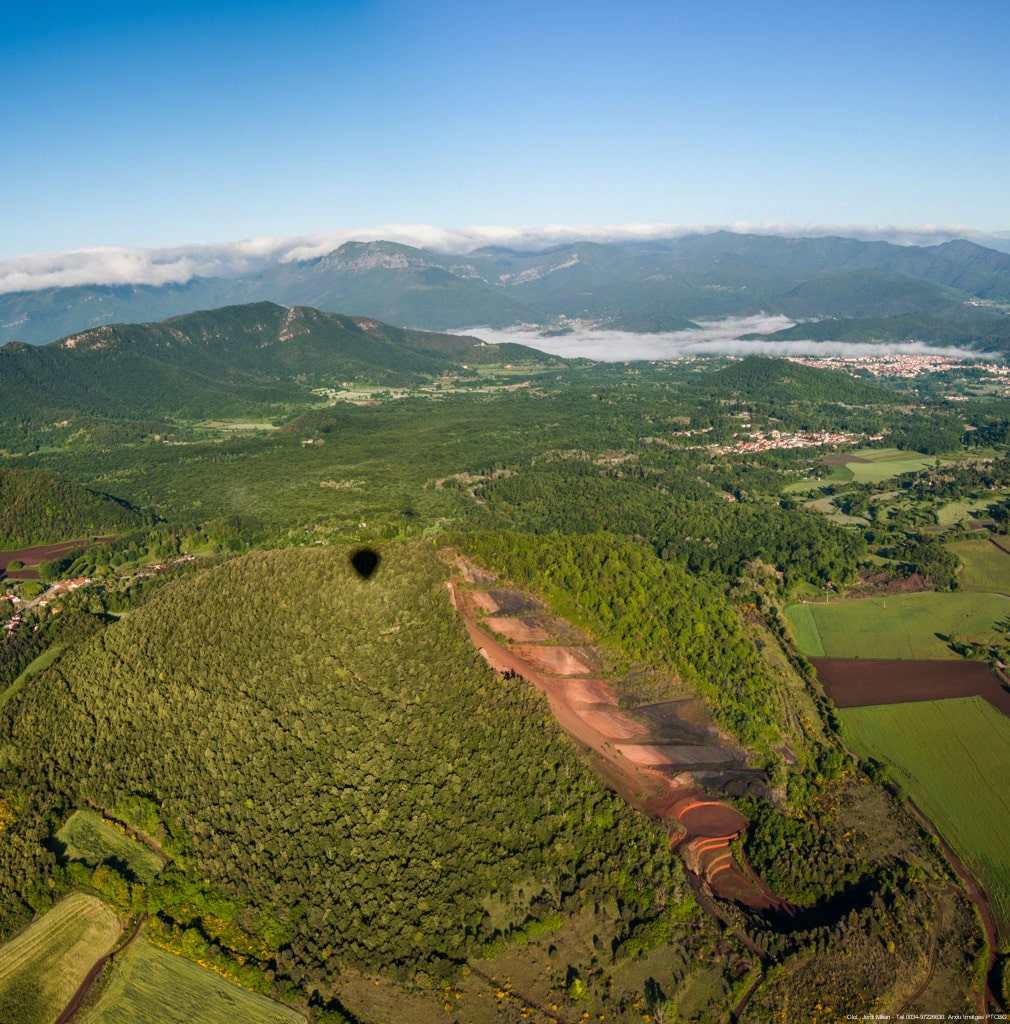
La Garrotxa and its capital, Olot, are so closely linked to their volcanic origin that they even have a city volcano. Its name is Montsacopa and in this case, the peculiarity is that it is literally in the middle of Olot.
From the top of the crater, with a diameter of 120 metres and a depth of 12 metres, you will be able to enjoy the panoramic views of a large part of Olot and the rest of the region.
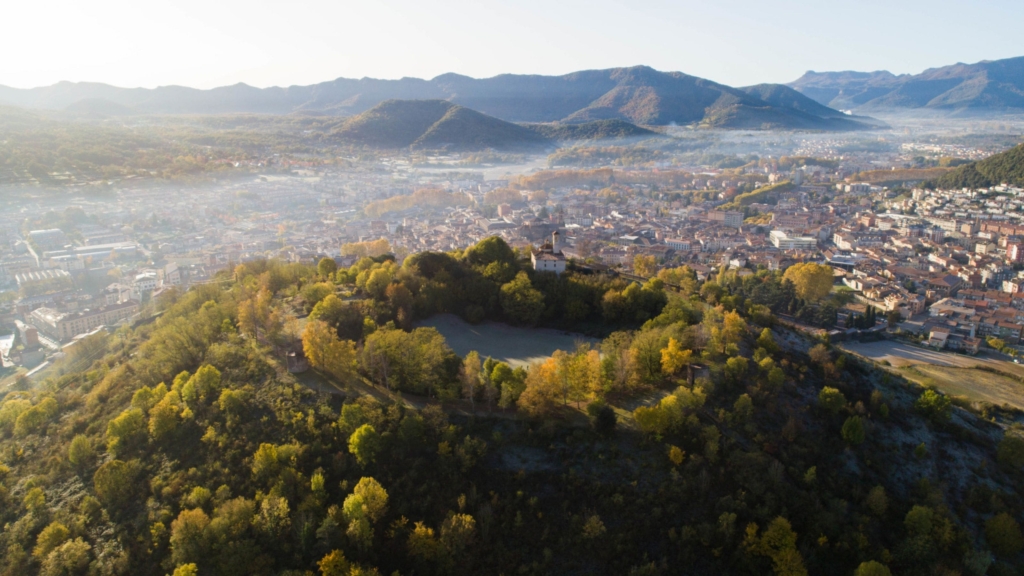
Want to know the names of the other volcanoes? Here is a list with all the volcanoes of the Garrotxa region.
We continue with more activities and things to do in the Garrotxa natural park because this is a place with infinite possibilities and many, many options.
We have already explained that hiking and cycling are two ideal options for touring the region, and we have also mentioned that the Volcanoes Route is a very good way to reach the region’s most outstanding sites
Even so, and as we don’t want to leave anything out, you can also go on excursions along the Carrilet Greenway, which starts in Olot and goes as far as Girona and can be continued as far as Sant Feliu de Guíxols. This is a fantastic recreational and sports activity, as you cross a region along very well marked trails and get a chance to see all the area’s landscape.
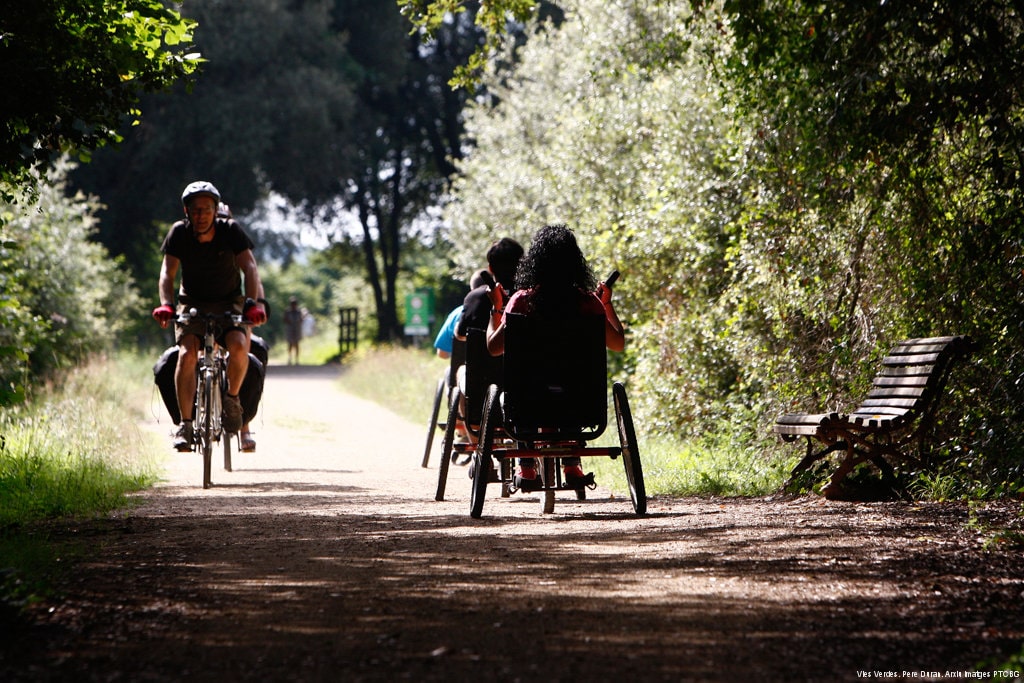
Gastronomy is the art of combining the culture, tradition, landscape and character of a region and transferring it to a plate in order to discover how it tastes. In the Garrotxa region, the unique combination of geography marked by the volcanic soil and a particularly humid microclimate, makes the lands extremely fertile and it is possible to grow products here that do not grow anywhere else. Some of the most outstanding products of the area are farro, buckwheat and Santa Pau beans.
Since 1994, the brand name for the cuisine of La Garrotxa has been “Volcanic Cuisine a seal that encompasses a way of understanding the region’s gastronomy and its entire ecosystem. I am sure that if you walk around the area villages, you will realise the importance of the rural environment, the agriculture and livestock farming, local produce and tradition.
We can assure you that the cuisine of the volcanic area of La Garrotxa is truly authentic, and if you wish to discover all its restaurants, here you have the volcanic cuisine guide.
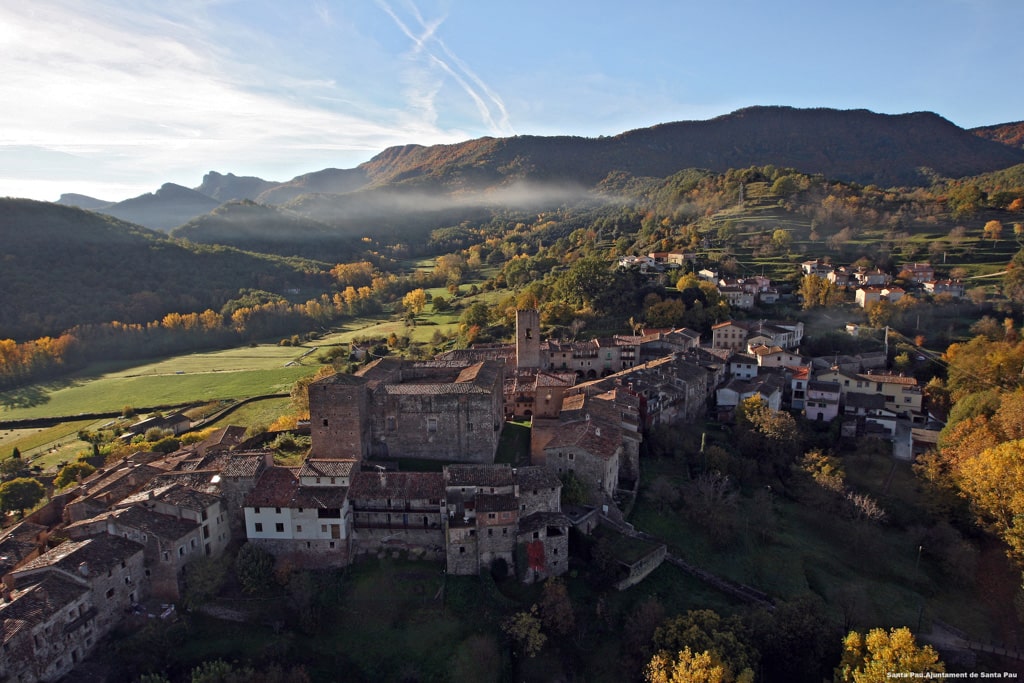
We end our activity suggestions with a unique and very romantic way to enjoy the landscape. Would you like to fly like a bird? I’m sure you know what we’re talking about.
Having a hot-air balloon flight is one of the most magical experiences you can have, especially if you do it in La Garrotxa. From up high you will be able to enjoy the most beautiful panoramic views of the territory and appreciate the majesty and contrasts of the landscape.
In the area you will find companies such as “Vol de Coloms”, which offer the option of a hot air balloon flight, while you enjoy a glass of cava and a good coca de chicharrones. At the end of the flight, you can end the experience with a good country breakfast based on local products. Don’t you think it’s rather appealing?
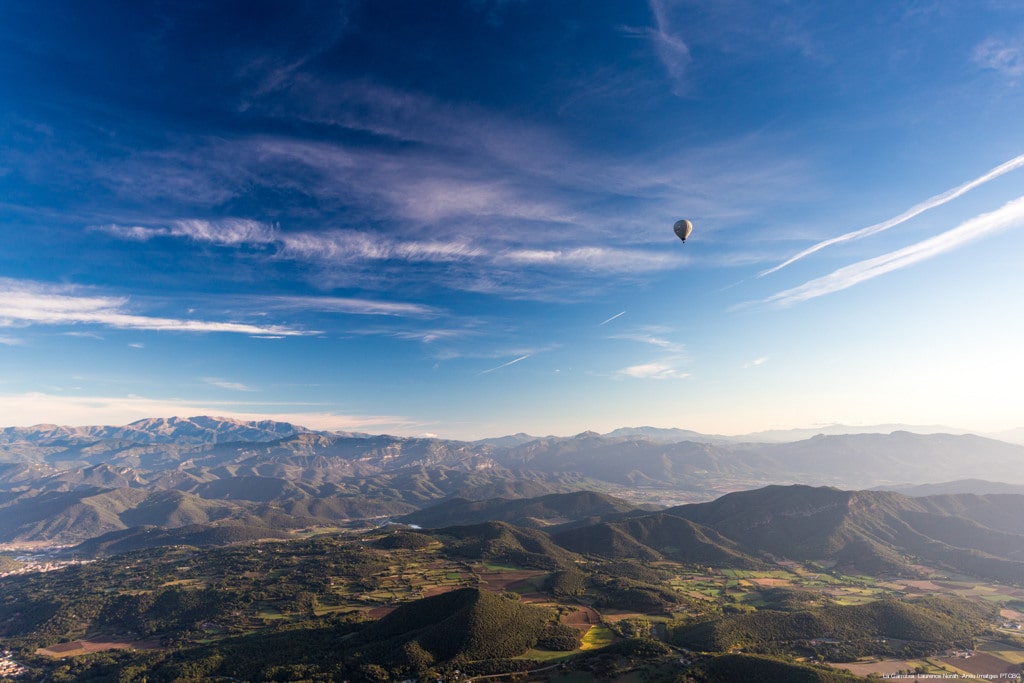
Access to the natural park is completely forbidden to vehicles, except for those with reduced mobility, who can apply for a special permit at the park’s information centres, preferably several days in advance.
So you have two options to get to the Natural Park:
The first is to park your vehicle in Olot or Santa Pau and from either municipality take the Volcanoes Bus to travel to the centre of the park, stopping also at the Fageda d’en Jordà and the Santa Margarida volcano car park.
The second option is to leave your vehicle in either of the two pay car parks available in the centre of the park, in the area of Can Serra, right next to the Fageda d’en Jordà, and near the Santa Margarida Volcano.
Waking up in such magical surroundings, amongst the volcanoes or very close to La Fageda d’en Jordà; it is quite an experience.
The tranquillity of this environment, the power of nature and some first class campsites will have you disconnect from your daily routine and reconnect with yourself, leading to unique moments with the family or friends you are travelling with. Both Camping Ecológico Lava and Camping La Fageda offer you superb facilities and the most complete services throughout the year, for a comfortable and pleasant stay.
Both campsites are located near La Fageda d’en Jordà and are very well connected by road. They offer a range of activities for children and adults alike to have fun discovering every corner of this beautiful area, while learning to respect and have fun with nature.
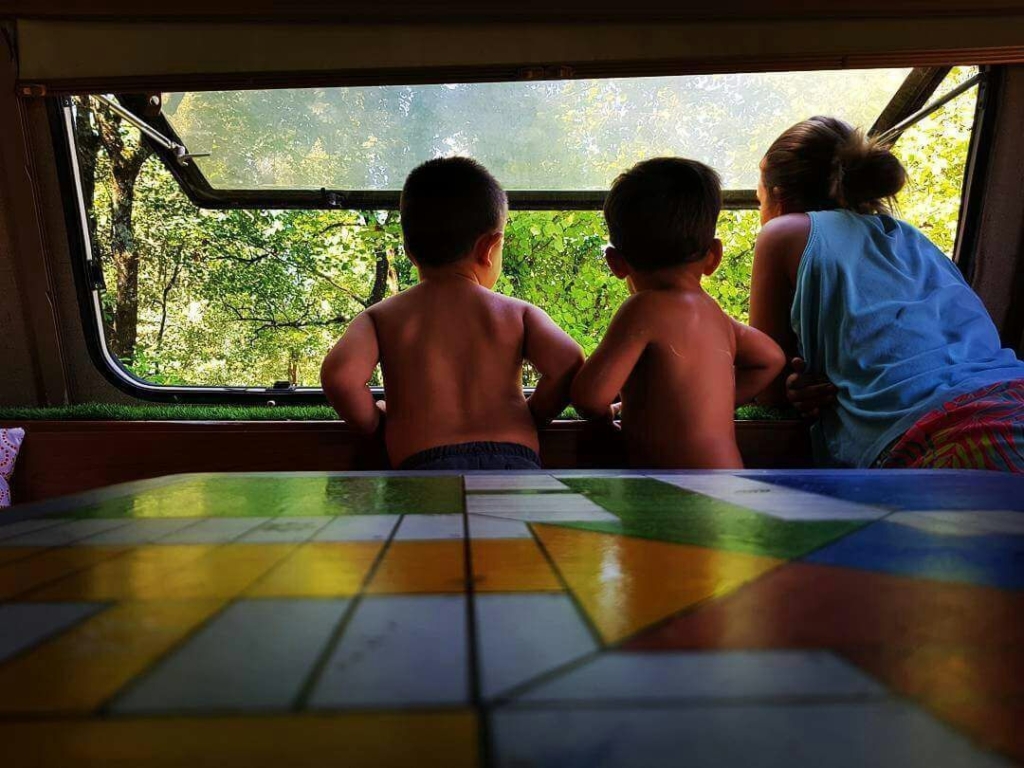
Are you thinking of going on an excursion to the Garrotxa Volcanic Area Natural Park? Here you can check the 7-day weather forecast to ensure a sunny day amongst the volcanoes!
So much for our explanation of La Garrotxa and its volcanoes, a magnificent natural and cultural heritage that must be preserved. See you again!